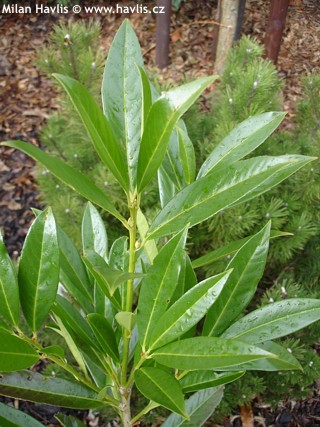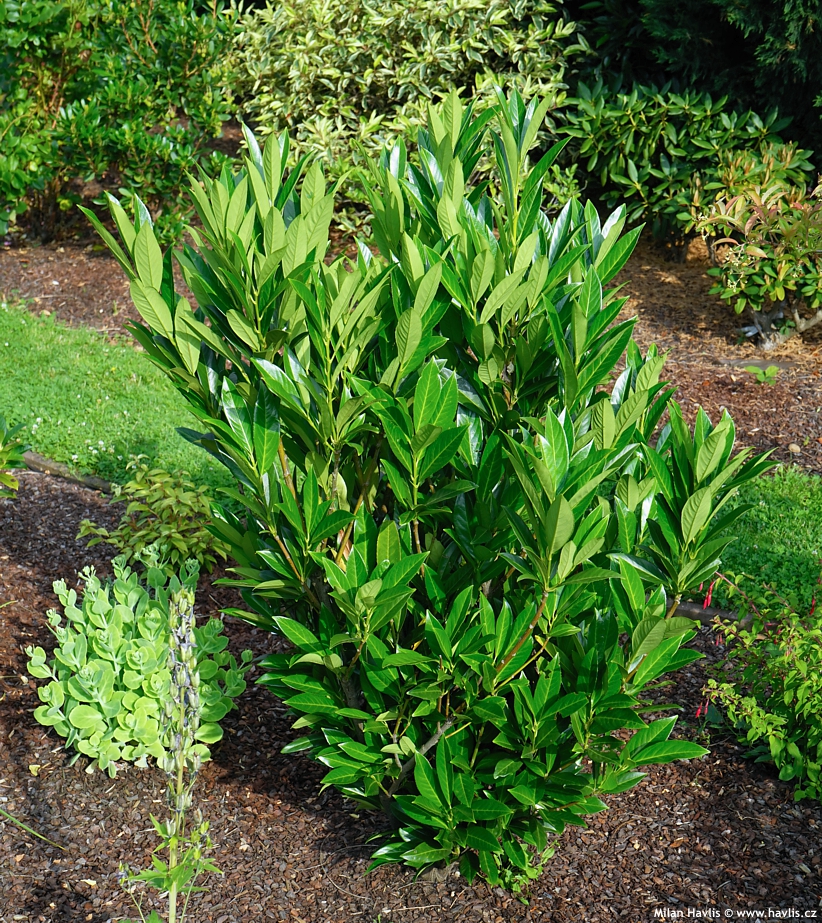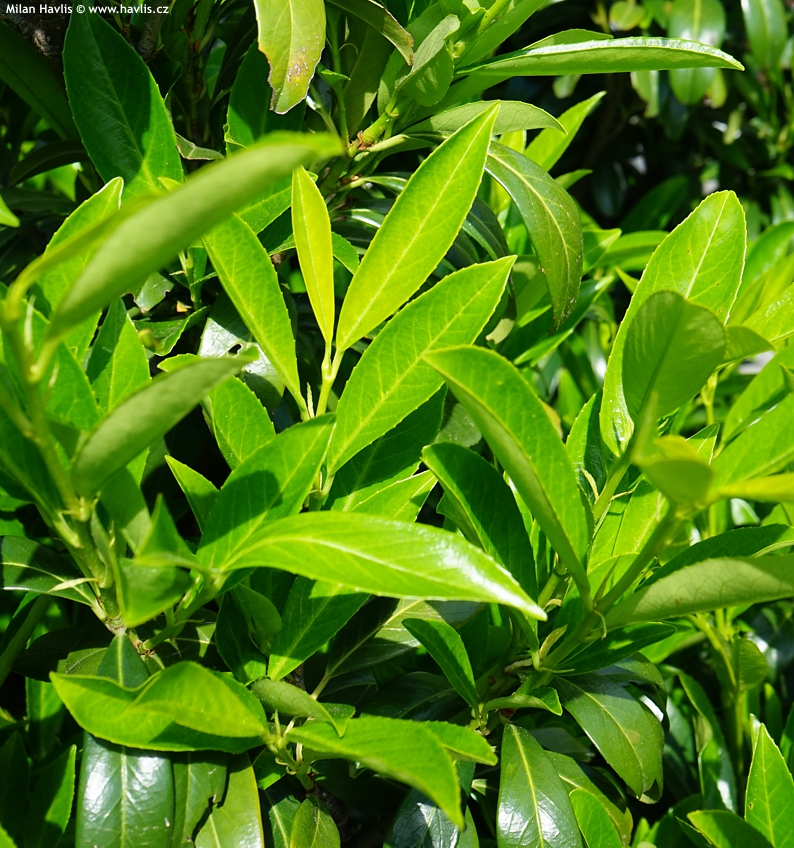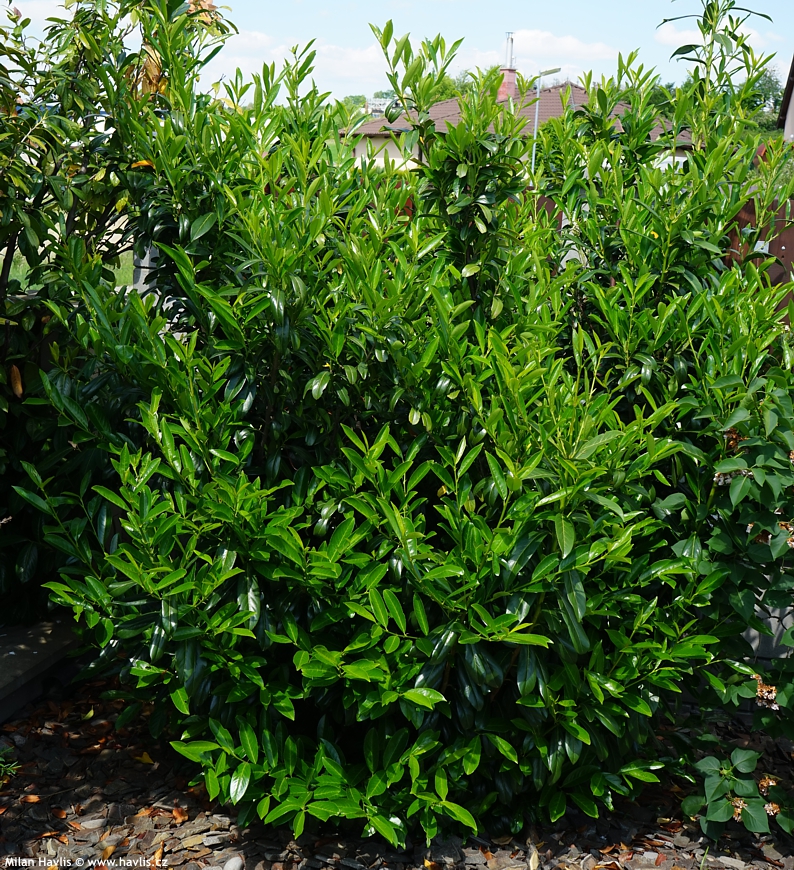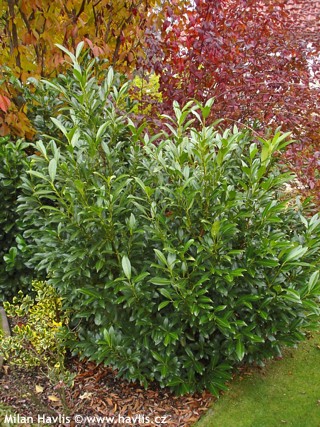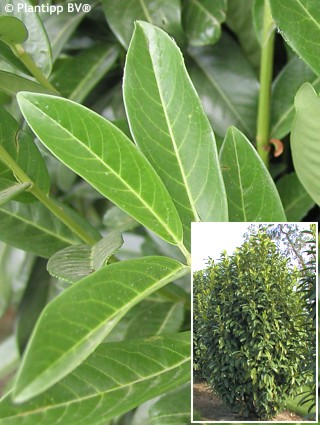Prunus laurocerasus 'Renlo' 'RENAULT ACE® cherry laurel, common laurel, English laurel
Prunus
We are specialists in evergreen plants and we offer the widest possible range of quality plants. English (cherry) laurel is probably the most common and reliable species.
RENAULT ACE® is a French cherry laurel selection found in Pépinières Renault nursery in a small town Gorron (west France). Its rich green foliage resembles Otto Luyken variety – the leaves are evergreen, leathery, emerald green, very glossy, narrow and acuminate (with a conspicuous tip), but about twice as large and not so dark. They are always upright, so is the shrub habit, dense and slender which makes it ideal for narrow spaces as well as evergreen hedges. It is quite dense even without pruning.
Cherry laurels have compound inflorescence made out of small, white, fragrant flowers that appear in April and May. They are followed by very ornamental fruits which, as recent studies confirmed, are not poisonous. Only seeds from unripe fruit if properly chewed may cause discomfort as they contain the same toxin as bitter almonds (source: Plants For A Future - www.pfaf.org). If you want to prune it, do so in early spring before new leaves emerge, or sheer it in mid-summer for shaping and reducing growth.
Laurels need slightly deep and fertile, acidic, moist soil, and extra watering in frost-free periods in winter to prevent from drying out before the ground gets frozen. It will thrive in full sun or part shade and will also tolerate being grown in full shade where it may slightly loose its shape. It seldom suffers from chlorosis (leaves turning yellow owing to lack of iron in the soil) but when it does use a special liquid soil pH balancer to keep it acidic which will help the plant absorb iron. Fully hardy to min. -25 °C (USDA zone 6), possibly more, and suitable for growing in large outdoor pots.
Last update 25-12-2009, 13-01-2012; 21-01-2021

































